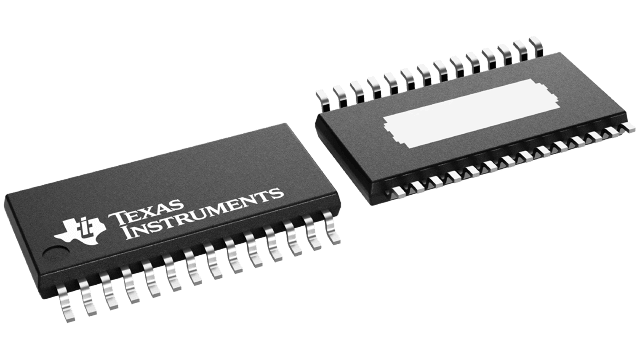Texas Instruments
TPS54610MPWPREP
TPS54610MPWPREP
Couldn't load pickup availability
TPS54610MPWPREP Texas Instruments - Yeehing Electronics
Enhanced Product 3-V To 6-V Input, 6-A Output Synchronous Buck Pwm Switcher W/ Integr. Fets
Pricing (USD)
| Quantity | Unit Price |
| 1 — 99 | 11.248 |
| 100 — 249 | 9.825 |
| 250 — 999 | 7.576 |
| 1,000 + | 4.74 |
The above prices are for reference only.
Specifications
| Manufacturer | Texas Instruments |
| Product Category | Switching Voltage Regulators |
| RoHS | Y |
| Mounting Style | SMD/SMT |
| Package / Case | HTSSOP-28 |
| Output Voltage | 0.9 V to 4.5 V |
| Output Current | 6 A |
| Number of Outputs | 1 Output |
| Input Voltage MAX | 6 V |
| Topology | Buck |
| Input Voltage MIN | 3 V |
| Switching Frequency | 700 kHz |
| Minimum Operating Temperature | - 55 C |
| Maximum Operating Temperature | + 125 C |
| Series | TPS54610-EP |
| Packaging | Reel |
| Height | 1.15 mm |
| Input Voltage | 3 V to 6 V |
| Length | 9.7 mm |
| Operating Temperature Range | - 55 C to + 125 C |
| Product | Voltage Regulators |
| Type | Step-Down Converter |
| Width | 4.4 mm |
| Brand | Texas Instruments |
| Load Regulation | 0.03 % / A |
| Moisture Sensitive | Yes |
| Operating Supply Current | 9.8 mA |
| Product Type | Switching Voltage Regulators |
| Factory Pack Quantity | 2000 |
| Subcategory | PMIC - Power Management ICs |
| Tradename | SWIFT |
| Unit Weight | 0.004180 oz |
For more information, please refer to datasheet
Documents
| TPS54610MPWPREP Datasheet |
More Information
As a member of the SWIFT™ family of dc/dc regulators, the TPS54610 low-input voltage high-output current synchronous buck PWM converter integrates all required active components. Included on the substrate with the listed features are a true, high-performance, voltage error amplifier that enables maximum performance and flexibility in choosing the output filter L and C components, an under-voltage-lockout circuit to prevent start-up until the input voltage reaches 3 V, an internally or externally set slow-start circuit to limit inrush currents, and a power good output useful for processor/logic reset, fault signaling, and supply sequencing.

